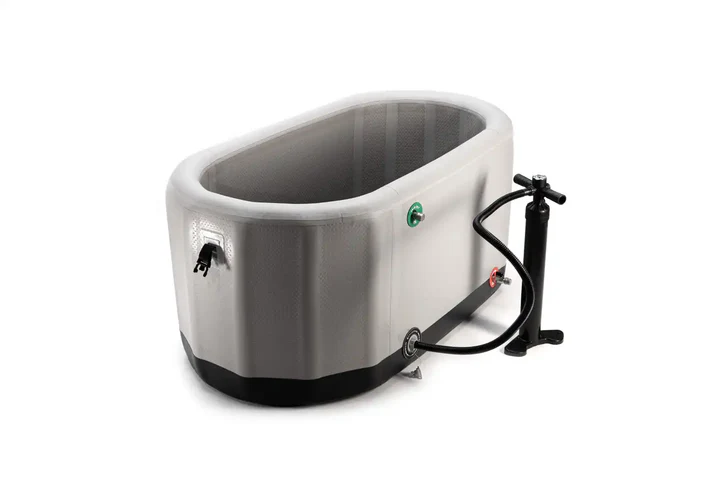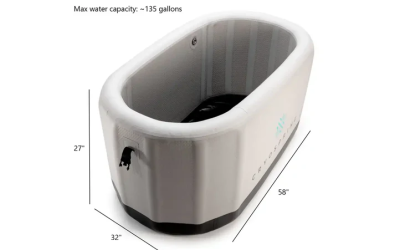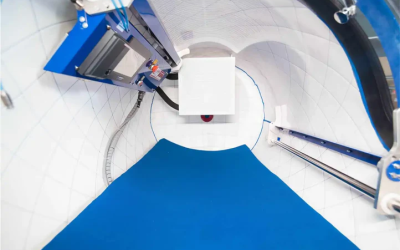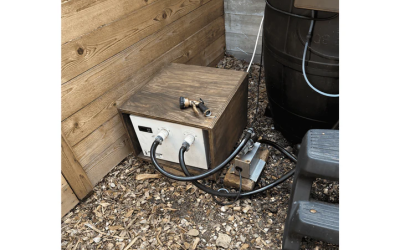Important precautions must be taken when using a cold plunge to ensure your safety and overall well-being. First and foremost, it is crucial to gradually acclimate your body to the freezing temperature. This can be done by starting with shorter durations in the plunge and slowly increasing the time as your body becomes accustomed.
Additionally, it is essential to listen to your body and pay attention to any signals it may be giving you. If you start to feel dizzy, lightheaded or experience any discomfort, it is important to exit the cold plunge immediately and seek medical attention if necessary.
Precautions to take before using a cold plunge
Before using a cold plunge, several precautions should be taken to ensure a safe and enjoyable experience. Firstly, it is recommended that you consult with a healthcare professional before incorporating cold plunges into your routine, especially if you have any underlying health conditions or concerns.
It is also important to avoid alcohol or any substances that may impair your judgment or reaction time before using a cold plunge. These substances can increase the risk of injury or accidents in cold water. Additionally, properly hydrate before and after using a cold plunge to prevent dehydration.
Furthermore, always enter and exit the cold plunge slowly and carefully to avoid slips, falls, or sudden shock to your body. Having someone nearby or within earshot is also important if you need assistance using the cold plunge.
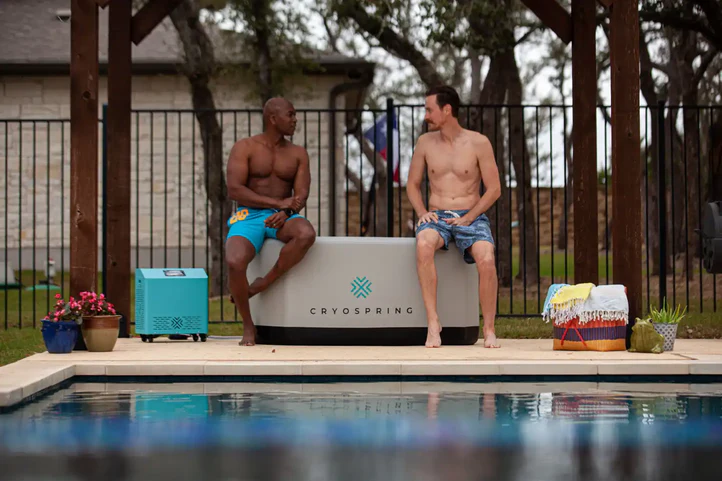
Consult with a healthcare professional.
Consulting with a healthcare professional before using a cold plunge is essential, especially if you have any pre-existing health conditions or concerns. A healthcare provider can help assess whether cold plunges are safe for you and guide you on safely incorporating them into your routine. They can also give specific recommendations based on your individual health needs and offer advice on how to acclimate your body to the cold temperature best.
Avoid alcohol and substances.
It is important to avoid consuming alcohol or any substances that may impair your judgment or reaction time before using a cold plunge. These substances can increase the risk of injury or accidents in cold water, so it is best to refrain from using them before and during your cold plunge session.
Hydrate properly
Proper hydration is key before and after using a cold plunge to prevent dehydration. Cold water immersion can cause the body to lose heat quickly, leading to increased fluid loss through sweating. Make sure to drink plenty of water before and after using a cold plunge to stay hydrated and support your body’s recovery process.
Discussing any potential risks or contraindications with a doctor
Discussing potential risks or contraindications with a doctor is crucial before incorporating cold plunges into your routine. Certain individuals may have underlying health conditions that could be exacerbated by exposure to cold water, such as heart conditions, high blood pressure, or respiratory issues.
A healthcare professional can evaluate your health status and provide personalized recommendations regarding the safety and suitability of cold plunges.
One important precaution when using a cold plunge is to avoid prolonged exposure to cold water. To prevent hypothermia or other adverse effects on your body, it is recommended that you limit your time in the plunge. Start with shorter durations and gradually increase the time as your body adjusts.
Another precaution is to be mindful of the water temperature. Ensure the cold plunge is set at a safe and comfortable temperature, typically around 50-60 degrees Fahrenheit. Exposing your body to extremely cold temperatures can increase the risk of hypothermia or shock, so it is important to monitor the water temperature and make adjustments as needed.
Assessing individual health conditions
Assessing individual health conditions is crucial before using a cold plunge. Consider any pre-existing health conditions or concerns that may impact your ability to use a cold plunge safely. Certain individuals, such as those with heart conditions, high blood pressure, or respiratory issues, may be at higher risk for adverse effects from exposure to cold water.
Considering factors such as heart conditions, blood pressure, and respiratory issues
Factors such as heart conditions, blood pressure, and respiratory issues must be considered when using a cold plunge before cardio. Individuals with heart conditions, high blood pressure, or respiratory problems may be more sensitive to the effects of cold water immersion.
For individuals with heart conditions, sudden exposure to cold water can cause the blood vessels to constrict, leading to an increase in blood pressure and potentially straining the heart. Similarly, individuals with high blood pressure may experience increased blood pressure in cold water, which can be dangerous if not monitored. Those with respiratory issues may find it difficult to breathe or experience discomfort while in the cold plunge.
Understanding the risks involved
Understanding the risks of using a cold plunge ensures your safety and well-being. Cold water immersion can pose certain risks, especially for individuals with underlying health conditions or those who do not take proper precautions.
One of the main risks of using a cold plunge is the potential for hypothermia. Hypothermia occurs when the body loses heat faster than it can produce, leading to a drop in body temperature. Prolonged exposure to cold water can increase the risk of hypothermia, especially if the water temperature is too low or if an individual stays in the plunge for an extended period.
Another risk to be aware of is the potential for shock. The sudden change in temperature from entering a cold plunge can cause a shock response in some individuals, leading to symptoms such as rapid breathing, increased heart rate, and muscle tension. This can be particularly dangerous for individuals with underlying health conditions or not accustomed to cold water immersion.
Educating oneself on the potential adverse effects of cold plunges
Educating oneself on the potential adverse effects of cold plunges is essential for ensuring a safe and beneficial experience. By understanding the risks involved, individuals can take necessary precautions to minimize negative effects on their bodies.
One potential adverse effect of cold plunges is exacerbating existing health conditions. For example, individuals with conditions like Raynaud’s disease or asthma may experience increased symptoms when exposed to freezing water immersion. It is important to consult with a healthcare provider before using a cold plunge if you have any pre-existing health concerns or conditions.

Precautions to take during a cold plunge session
Precautions to take during a cold plunge session:
- Gradual exposure: It is important to ease into the cold plunge session by gradually immersing yourself in the freezing water. Start with shorter durations and slowly increase the time spent in the plunge to allow your body to acclimate to the temperature.
- Monitoring your body: Pay attention to how your body reacts during the cold plunge session. Listen to any warning signs, such as shivering, numbness, or discomfort, and exit the plunge if you feel unwell.
- Hydration: Stay hydrated before and after your cold plunge session to help regulate your body temperature and prevent dehydration.
- Warm-up afterward: After exiting the cold plunge, warm up slowly by drying off and dressing in warm clothing to help your body adjust to the temperature change.
- Know your limits: It is important to know your limits and not push yourself beyond what your body can handle. If you start to feel lightheaded, dizzy, or experience any other concerning symptoms, exit the cold plunge immediately.
- Consult with a healthcare provider: If you have any underlying health conditions or concerns about using a cold plunge, it is important to consult a healthcare provider before starting any cold plunge sessions. They can guide you on whether it is safe to participate in cold water immersion and offer recommendations on how to do so safely.
Gradual exposure to cold temperatures
Gradual exposure to cold plunge temperature is key to safely using a cold plunge. It is important to slowly acclimate your body to the cold water to avoid shock or hypothermia. Start by dipping your toes in the water and gradually submerge more of your body over time. Adjust to the temperature before fully immersing yourself in the cold plunge.
By easing into the cold plunge session, you give your body time to adapt to the freezing temperature and reduce the risk of experiencing negative side effects. It is also important to listen to your body during the plunge session and exit if you feel uncomfortable or unwell.
Starting with shorter durations and gradually increasing exposure time
A key precaution when using a cold plunge is starting with shorter durations and gradually increasing exposure time. Starting with shorter durations, such as just a few minutes, allows your body to adjust to the cold water temperature without overwhelming it. As your body becomes more accustomed to the cold water, you can gradually increase the duration of your cold plunge sessions.
This gradual approach helps minimize the risk of experiencing negative side effects such as hypothermia or shock. It also allows you to gauge how your body reacts to the cold water and adjust accordingly. By listening to your body’s cues and slowly increasing exposure time, you can safely enjoy the benefits of a cold plunge without putting yourself at risk.
Monitoring heart rate and blood pressure
During a cold plunge session, monitoring your heart rate and blood pressure is important to ensure you are not putting undue stress on your cardiovascular system. Cold water immersion can cause a temporary increase in heart rate and blood pressure as the body works to maintain its core temperature.
Monitoring your heart rate and blood pressure during a cold plunge session is especially important if you have any pre-existing cardiovascular conditions or concerns. If you notice any significant changes or symptoms, such as chest pain, shortness of breath, or dizziness, it is important to exit the cold plunge immediately and seek medical attention.
Monitoring your heart rate and blood pressure before, during, and after a cold plunge session can help you gauge how your body responds to the cold water immersion.
Ensuring that vital signs remain stable during the cold immersion
Ensuring that critical signs remain stable during the cold immersion is crucial for a safe and effective cold plunge experience. Here are some key tips to help monitor and maintain stable vital signs during your cold water immersion:
- Before entering the cold plunge, take note of your baseline heart rate and blood pressure. This will give you a reference point to compare with during and after the session.
- During the cold plunge, periodically check your heart rate and blood pressure to ensure they are within a safe range. If you notice any significant changes or abnormalities, exit the cold plunge immediately.
- Pay attention to how you are feeling during the cold immersion. If you start to feel lightheaded, dizzy, or experience chest pain, it is important to exit the cold plunge and seek medical attention.
Another important precaution when using a cold plunge is ensuring the water temperature is appropriate for your body. Cold water immersion can be beneficial for reducing inflammation and promoting recovery, but it is important not to make the water too cold. Aim for a temperature between 50 and 60 degrees Fahrenheit, as too cold water can increase the risk of hypothermia and shock.

